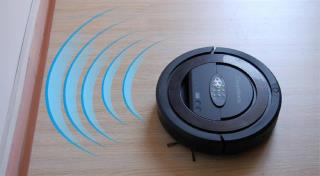Thelia 2.3:n asentaminen Debian 9:ään
Käytätkö erilaista järjestelmää? Thelia on avoimen lähdekoodin työkalu sähköisen liiketoiminnan verkkosivustojen luomiseen ja PHP:llä kirjoitetun online-sisällön hallintaan. Thelia-lähdekoodi i
BlogoText CMS is a simple and lightweight, free and open source Content Management System (CMS) and minimalist blog engine. BlogoText CMS features built in RSS feeds, links sharing, drag and drop image and file upload, JSON/ZIP/HTML import and export, as well as Wordpress import. BlogoText is ideal for bloggers and developers who like to take a more minimalist approach to blogging.
In this tutorial we are going to install BlogoText CMS on a Fedora 26 LAMP VPS using Apache web server, PHP 7.1, and a MariaDB database.
We will start by adding a new sudo user.
First, log into your server as root:
ssh root@YOUR_VULTR_IP_ADDRESS
Add a new user called user1 (or your preferred username):
useradd user1
Next, set the password for the user1 user:
passwd user1
When prompted, enter a secure and memorable password.
Now check the /etc/sudoers file to make sure that the sudoers group is enabled:
visudo
Look for a section like this:
%wheel ALL=(ALL) ALL
Make sure it is uncommented. This line tells us that users who are members of the wheel group can use the sudo command to gain root privileges.
Once you have edited the file, you can save and exit by pressing Esc and then entering :wq to "write" and "quit" the file.
Next we need to add user1 to the wheel group:
usermod -aG wheel user1
We can verify the user1 group membership and check that the usermod command worked with the groups command:
groups user1
Now use the su command to switch to the new sudo user user1 account:
su - user1
The command prompt will update to indicate that you are now logged into the user1 account. You can verify this with the whoami command:
whoami
Now restart the sshd service so that you can login via ssh with the new non-root sudo user account you have just created:
sudo systemctl restart sshd
Exit the user1 account:
exit
Exit the root account (which will disconnect your ssh session):
exit
You can now ssh into the server instance from your local host using the new non-root sudo user user1 account:
ssh user1@YOUR_VULTR_IP_ADDRESS
If you want to execute sudo without having to type a password every time, then open the /etc/sudoers file again, using visudo:
sudo visudo
Edit the section for the wheel group so that it looks like this:
%wheel ALL=(ALL) NOPASSWD: ALL
Please note: Disabling the password requirement for the sudo user is not a recommended practice, but it is included here as it can make server configuration much more convenient and less frustrating, especially during longer systems administration sessions. If you are concerned about the security implications, you can always revert the configuration change to the original after you finish your administration tasks.
Whenever you want to log into the root user account from within the sudo user account, you can use one of the following commands:
sudo -i
sudo su -
You can exit the root account and return back to your sudo user account any time by simply typing the following:
exit
Before installing any packages on the Fedora server instance, we will first update the system.
Make sure you are logged in to the server using a non-root sudo user and run the following command:
sudo dnf -y update
Install the Apache web server:
sudo dnf -y install httpd
Then use the systemctl command to start and enable Apache to execute automatically at boot time:
sudo systemctl enable httpd
sudo systemctl start httpd
Check your Apache configuration file to ensure that the DocumentRoot directive points to the correct directory:
sudo vi /etc/httpd/conf/httpd.conf
The DocumentRoot configuration option will look like this:
DocumentRoot "/var/www/html"
Now, let's make sure that the mod_rewrite Apache module is loaded. We can do this by searching the Apache base modules configuration file for the term "mod_rewrite".
Open the file:
sudo vi /etc/httpd/conf.modules.d/00-base.conf
Search for the term mod_rewrite.
If the mod_rewrite Apache module is loaded, you will find a configuration line looking like this:
LoadModule rewrite_module modules/mod_rewrite.so
If the above line starts with a semi-colon, you will need to remove the semi-colon to uncomment the line and load the module. This, of course, applies to any other required Apache modules too.
We now need to edit Apache's default configuration file so that mod_rewrite will work correctly with BlogoText CMS.
Open the file:
sudo vi /etc/httpd/conf/httpd.conf
Then find the section that starts with <Directory "/var/www/html"> and change AllowOverride none to AllowOverride All. The end result (with all comments removed) will look something like this:
<Directory "/var/www/html">
Options Indexes FollowSymLinks
AllowOverride All
Require all granted
</Directory>
Now save and close the Apache configuration file.
We will restart Apache at the end of this tutorial, but restarting Apache regularly during installation and configuration is certainly a good habit, so let's do it now:
sudo systemctl restart httpd
We now need to open the default HTTP and HTTPS ports as they will be blocked by firewalld by default.
Open the firewall ports:
sudo firewall-cmd --permanent --add-port=80/tcp
sudo firewall-cmd --permanent --add-port=443/tcp
Reload the firewall to apply the changes:
sudo firewall-cmd --reload
You will see the word success displayed in your terminal after each successful firewall configuration command.
We can quickly verify that the Apache HTTP port is open by visiting the IP address or domain of the server instance in a browser:
http://YOUR_VULTR_IP_ADDRESS/
You will see the default Apache web page in your browser.
SELinux stands for "Security Enhanced Linux". It is a security enhancement to Linux which allows users and administrators more control over access control. It is enabled by default in Fedora 26, but it is definitely not essential for server security as many Linux server distributions do not ship with it installed or enabled by default.
To avoid file permission problems with BlogoText CMS later down the line, we are going to disable SELinux, for now. So open the SELinux configuration file with your favourite terminal editor:
sudo vi /etc/selinux/config
Change SELINUX=enforcing to SELINUX=disabled and then save the file.
To apply the configuration change, SELinux requires a server reboot, so you can either restart the server using the Vultr control panel or you can simply use the shutdown command:
sudo shutdown -r now
When the server reboots, your SSH session will get disconnected and you may see a message informing you about a 'broken pipe' or 'Connection closed by remote host'. This is nothing to worry about, simply wait for 20 seconds or so and then SSH back in again (with your own username and domain):
ssh user1@YOUR_DOMAIN
Or (with your own username and IP address):
ssh user1@YOUR_VULTR_IP_ADDRESS
Once you have logged back in, you should check the status of SELinux again with the sestatus command to make sure it is properly disabled:
sudo sestatus
You should see a message saying SELinux status: disabled. If you see a message saying SELinux status: enabled (or something similar) you will need to repeat the above steps and ensure that you properly restart your server.
We can now install PHP 7.1 along with all of the necessary PHP modules required by BlogoText CMS:
sudo dnf -y install php php-mysqlnd php-mbstring php-gd php-common php-pdo php-pecl-imagick php-xml php-zip
Fedora 26 defaults to using MariaDB database server, which is an enhanced, fully open source, community developed, drop-in replacement for MySQL server.
Install MariaDB database server:
sudo dnf -y install mariadb-server
Start and enable MariaDB server to execute automatically at boot time:
sudo systemctl enable mariadb
sudo systemctl start mariadb
Secure your MariaDB server installation:
sudo mysql_secure_installation
The root password will be blank, so simply hit enter when prompted for the root password.
When prompted to create a MariaDB/MySQL root user, select "Y" (for yes) and then enter a secure root password. Simply answer "Y" to all of the other yes/no questions as the default suggestions are the most secure options.
Log into the MariaDB shell as the MariaDB root user by running the following command:
sudo mysql -u root -p
To access the MariaDB command prompt, simply enter the MariaDB root password when prompted.
Run the following queries to create a MariaDB database and database user for BlogoText CMS:
CREATE DATABASE blogo_db CHARACTER SET utf8 COLLATE utf8_general_ci;
CREATE USER 'blogo_user'@'localhost' IDENTIFIED BY 'UltraSecurePassword';
GRANT ALL PRIVILEGES ON blogo_db.* TO 'blogo_user'@'localhost';
FLUSH PRIVILEGES;
EXIT;
You can replace the database name blogo_db and username blogo_user with something more to your liking, if you prefer. Also, make sure that you replace "UltraSecurePassword" with an actually secure password.
Change your current working directory to the default web directory:
cd /var/www/html/
If you get an error message saying something like 'No such file or directory' then try the following command:
cd /var/www/ ; sudo mkdir html ; cd html
Your current working directory will now be: /var/www/html/. You can check this with the pwd (print working directory) command:
pwd
Now use wget to download the BlogoText CMS installation package:
sudo wget https://github.com/BlogoText/blogotext/archive/3.7.6.zip
Please note: You should definitely check for the most recent version by visiting the BlogoText CMS download page.
List the current directory to check that you have successfully downloaded the file:
ls -la
Let's quickly install unzip so we can unzip the file:
sudo dnf -y install unzip
Now uncompress the zip archive:
sudo unzip 3.7.6.zip
Move all of the installation files to the web root directory:
sudo mv blogotext-3.7.6/* /var/www/html
Change ownership of the web files to avoid any permissions problems:
sudo chown -R apache:apache * ./
Restart Apache again:
sudo systemctl restart httpd
Now we're ready to move on to the final step.
It's time to visit the IP address of your server instance in your browser, or if you've already configured your Vultr DNS settings (and given it enough time to propagate) you can simply visit your domain instead.
To access the BlogoText CMS installation page, enter your Vultr instance IP address into your browser address bar, followed by /admin/install.php:
http://YOUR_VULTR_IP_ADDRESS/admin/install.php
Most of the installation options are self explanatory, but here are a few pointers to help you along:
Select your language and click on the OK button.
Enter the following Administrator and Site details:
Username: admin
Password: <admin password>
Blog’s URL: <your URL>
Click OK to continue.
Select MySQL as the DBMS and then enter the following database values:
MySQL User: blogo_user
MySQL Password: UltraSecurePassword
MySQL Database: blogo_db
MySQL Host: localhost
Click OK to continue.
You will be automatically redirected to the admin section so simply enter your username and password and click on the Connection button to log in. You can also enter the admin address manually by entering the following URL:
http://YOUR_VULTR_IP_ADDRESS/admin
For added security, you can change the name of your /admin/ folder:
sudo mv -i ./admin ./top_secret_name
You are now ready to start adding your content and configuring the look and feel of your site. Make sure you check out the BlogoText CMS wiki page for more information about how to build and configure your site.
Käytätkö erilaista järjestelmää? Thelia on avoimen lähdekoodin työkalu sähköisen liiketoiminnan verkkosivustojen luomiseen ja PHP:llä kirjoitetun online-sisällön hallintaan. Thelia-lähdekoodi i
Käytätkö erilaista järjestelmää? Microweber on avoimen lähdekoodin vedä ja pudota sisällönhallintajärjestelmä ja verkkokauppa. Microweber-lähdekoodia isännöidään GitHubissa. Tämä opas näyttää sinulle
Käytätkö erilaista järjestelmää? DotCMS on avoimen lähdekoodin, yritystason sisällönhallintajärjestelmä, joka on kirjoitettu Java-kielellä. Se sisältää lähes kaikki tarvittavat ominaisuudet
Käytätkö erilaista järjestelmää? Pagekit 1.0 CMS on kaunis, modulaarinen, laajennettava ja kevyt, ilmainen ja avoimen lähdekoodin sisällönhallintajärjestelmä (CMS), jossa on
Käytätkö erilaista järjestelmää? BigTree CMS 4.2 on nopea ja kevyt, ilmainen ja avoimen lähdekoodin yritystason sisällönhallintajärjestelmä (CMS), jossa on laaja
Käytätkö erilaista järjestelmää? Pagekit on avoimen lähdekoodin CMS, joka on kirjoitettu PHP:llä. Pagekit-lähdekoodia isännöi GitHub. Tämä opas näyttää kuinka asennus tehdään
Käytätkö erilaista järjestelmää? PyroCMS on avoimen lähdekoodin CMS, joka on kirjoitettu PHP:llä. PyroCMS-lähdekoodia isännöidään GitHubissa. Tässä oppaassa käy hyvin läpi koko
Käytätkö erilaista järjestelmää? Subrion 4.1 CMS on tehokas ja joustava avoimen lähdekoodin sisällönhallintajärjestelmä (CMS), joka tuo intuitiivisen ja selkeän sisällön
Käytätkö erilaista järjestelmää? Backdrop CMS 1.8.0 on yksinkertainen ja joustava, mobiiliystävällinen, ilmainen ja avoimen lähdekoodin sisällönhallintajärjestelmä (CMS), jonka avulla voimme
Käytätkö erilaista järjestelmää? Johdanto Roadiz on moderni sisällönhallintajärjestelmä, joka on suunniteltu käsittelemään monenlaisia palveluita. Perustuu Symfonyn komponentteihin ja Doctrine ORM:iin, ts
Käytätkö erilaista järjestelmää? Microweber on avoimen lähdekoodin vedä ja pudota sisällönhallintajärjestelmä ja verkkokauppa. Microweber-lähdekoodia isännöidään GitHubissa. Tämä opas näyttää sinulle
Käytätkö erilaista järjestelmää? Grav on avoimen lähdekoodin kiinteätiedostoinen CMS, joka on kirjoitettu PHP:llä. Gravin lähdekoodia isännöidään julkisesti GitHubissa. Tämä opas näyttää sinulle, kuinka t
Käytätkö erilaista järjestelmää? Grav on avoimen lähdekoodin kiinteätiedostoinen CMS, joka on kirjoitettu PHP:llä. Gravin lähdekoodia isännöidään julkisesti GitHubissa. Tämä opas näyttää sinulle, kuinka t
Käytätkö erilaista järjestelmää? Automad on avoimen lähdekoodin tiedostopohjainen sisällönhallintajärjestelmä (CMS) ja mallipohja, joka on kirjoitettu PHP:llä. Automadin lähdekoodi i
Raneto on ilmainen ja avoimen lähdekoodin tietokanta, joka on rakennettu Node.js:lle ja joka on helppo asentaa ja käyttää sekä helposti hallita. Luokat ja sivut ar
Käytätkö erilaista järjestelmää? Thelia on avoimen lähdekoodin työkalu sähköisen liiketoiminnan verkkosivustojen luomiseen ja PHP:llä kirjoitetun online-sisällön hallintaan. Thelia-lähdekoodi i
Käytätkö erilaista järjestelmää? Lokakuu 1.0 CMS on yksinkertainen ja luotettava, ilmainen ja avoimen lähdekoodin sisällönhallintajärjestelmä (CMS), joka perustuu Laravel-kehykseen
Käytätkö erilaista järjestelmää? ImpressPages CMS 5.0 on yksinkertainen ja tehokas, ilmainen ja avoimen lähdekoodin, käyttäjäystävällinen, MVC-pohjainen sisällönhallintajärjestelmä (CMS)
Käytätkö erilaista järjestelmää? CMS Made Simple 2.2 on joustava ja laajennettava, ilmainen ja avoimen lähdekoodin sisällönhallintajärjestelmä (CMS), joka on älykkäästi suunniteltu
Käytätkö erilaista järjestelmää? Couch CMS on yksinkertainen ja joustava, ilmainen ja avoimen lähdekoodin sisällönhallintajärjestelmä (CMS), jonka avulla web-suunnittelijat voivat suunnitella
Tekoäly ei ole tulevaisuudessa, se tässä nykyisyydessä Tässä blogissa Lue kuinka tekoälysovellukset ovat vaikuttaneet eri sektoreihin.
Oletko myös DDOS-hyökkäysten uhri ja hämmentynyt ehkäisymenetelmistä? Lue tämä artikkeli ratkaistaksesi kysymyksesi.
Olet ehkä kuullut, että hakkerit ansaitsevat paljon rahaa, mutta oletko koskaan miettinyt, kuinka he ansaitsevat tuollaista rahaa? keskustellaan.
Haluatko nähdä Googlen vallankumouksellisia keksintöjä ja kuinka nämä keksinnöt muuttivat jokaisen ihmisen elämää nykyään? Lue sitten blogia nähdäksesi Googlen keksinnöt.
Konsepti itseohjautuvista autoista lähteä tielle tekoälyn avulla on ollut haaveena jo jonkin aikaa. Mutta useista lupauksista huolimatta niitä ei näy missään. Lue tämä blogi saadaksesi lisätietoja…
Kun tiede kehittyy nopeasti ja ottaa haltuunsa suuren osan ponnisteluistamme, myös riskit altistaa itsemme selittämättömälle singulariteetille kasvavat. Lue, mitä singulaarisuus voisi tarkoittaa meille.
Tietojen säilytystavat ovat kehittyneet mahdollisesti Datan syntymästä lähtien. Tämä blogi käsittelee tiedon tallennuksen kehitystä infografian pohjalta.
Blogista saat tietää Big Data -arkkitehtuurin eri kerroksista ja niiden toiminnoista yksinkertaisimmalla tavalla.
Tässä digitaalisessa maailmassa kodin älylaitteista on tullut tärkeä osa elämää. Tässä on muutamia älykkäiden kodin laitteiden hämmästyttäviä etuja, joiden avulla ne tekevät elämästämme elämisen arvoista ja yksinkertaisempaa.
Apple julkaisi äskettäin macOS Catalina 10.15.4 -lisäpäivityksen ongelmien korjaamiseksi, mutta näyttää siltä, että päivitys aiheuttaa lisää ongelmia, jotka johtavat mac-koneiden tiilikaamiseen. Lue tämä artikkeli saadaksesi lisätietoja



